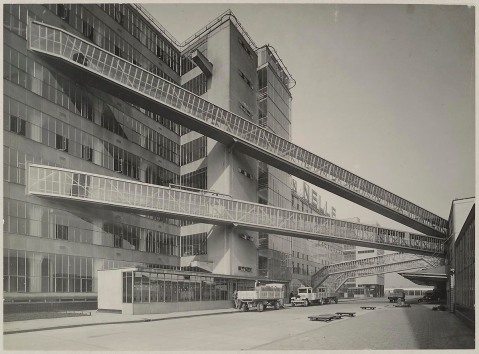Book Review: Brinkman & van der Vlugt Architects
The Dutch modernists architectural practice Brinkman & van der Vlugt is mostly known for the Van Nelle factory (1925-1931). This building is an excellent example of New Objectivity architecture (Neue Sachlichkeit), and its quality is, in my mind, on par with the Bauhaus building in Dessau by Walter Gropius. As a matter of fact, the director of the Van Nelle company at the time; C.H. van der Leeuw, was a visionary figure who traveled extensively and befriended many avant-garde architects. He corresponded with Gropius, Richard Neutra, and many others and traveled to the United States in preparation for the building of the factory. When he met Neutra, he decided to sponsor the building of his private house with an interest free loan, which later became known as VDL research house (acronym of Van der Leeuw). He was, apart from his interest in the avant-garde, also a key figure and patron of the international Theosophical Society, where he met Annie Besant and Krishnamurti.
Due to the strong association of the architectural office with the Van Nelle factory, the architects Brinkman & van der Vlugt are sometimes understood as commercial architects who were serving their clients’ needs rather than being innovative figures by and of themselves. They were, in short, somewhat overshadowed by the influential Kees van der Leeuw. Given the fact that in 1922 Van der Vlugt had already done a modernist school in Groningen, (with J.G. Wiebenga), and that Brinkman designed the iconic Spangen housing block with so called ‘streets in the sky’ in the same year, (which later influenced the Smithsons), this reading of history is in serious need of correction. Most of the original literary sources on Dutch modernism are in Dutch, German and French language publications, which makes an English language monograph, in theory at least, welcome. It is quite unfortunate, however, that the architecture is continuously described in the book as “International Style”, – which is the reductive and unfortunate positioning of European modernism as a ‘style’-, and that the commercial rather than the creative and artistic influences are predominantly traced in this book. The sources for the architecture of the office of Brinkman & van der Vlugt are, in fact, much more wide-ranging and complex, and it is quite difficult to maintain, given the unmarketable reputation of the New Objectivity and the economic crisis of 1929, that commercial motives were the main driver of this innovative practice.
For a better account of the architecture of the office I would rather refer you to Dutch language sources, but for those who are not fluent in Dutch, the book does form a nice first introduction to the variety of the work of these important architects.
